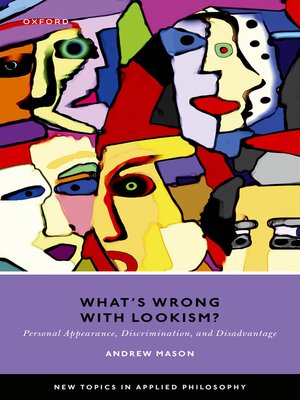What's Wrong with Lookism?
ebook ∣ Personal Appearance, Discrimination, and Disadvantage · New Topics in Applied Philosophy
By Andrew Mason

Sign up to save your library
With an OverDrive account, you can save your favorite libraries for at-a-glance information about availability. Find out more about OverDrive accounts.
Find this title in Libby, the library reading app by OverDrive.



Search for a digital library with this title
Title found at these libraries:
| Loading... |
People are treated differently as a result of their looks. But when is appearance discrimination, or "lookism" as it is often called, morally objectionable? This issue is important for at least two reasons. First, the benefits that flow to people who are regarded as visually attractive are sizeable and are enjoyed in a number of contexts, including employment, personal relationships, education, politics, and the criminal justice system. Second, appearance
discrimination is of moral interest not only in its own right, but also in terms of its connection to other forms of discrimination. Appearance norms, that is, norms concerning how we should look, often place greater burdens on disadvantaged groups. As a result, discrimination on the basis of appearance, when
it rewards people who conform to these norms, may involve, or interact with, the effects of, wrongful discrimination on the basis of features other than appearance, in a way that aggravates existing injustices. What's Wrong with Lookism? examines the morality of appearance discrimination in three contexts: employment decisions; the choice of friends or romantic partners; and the everyday practice of judging and commenting upon people's looks. Andrew Mason develops a pluralist theory of what makes discrimination wrong that identifies three wrong-making features, namely, disrespect, deliberative unfairness, and contributing to unjust consequences, and demonstrates how the presence of one or
more of these features in each of these contexts problematises the lookism that takes place in it.






